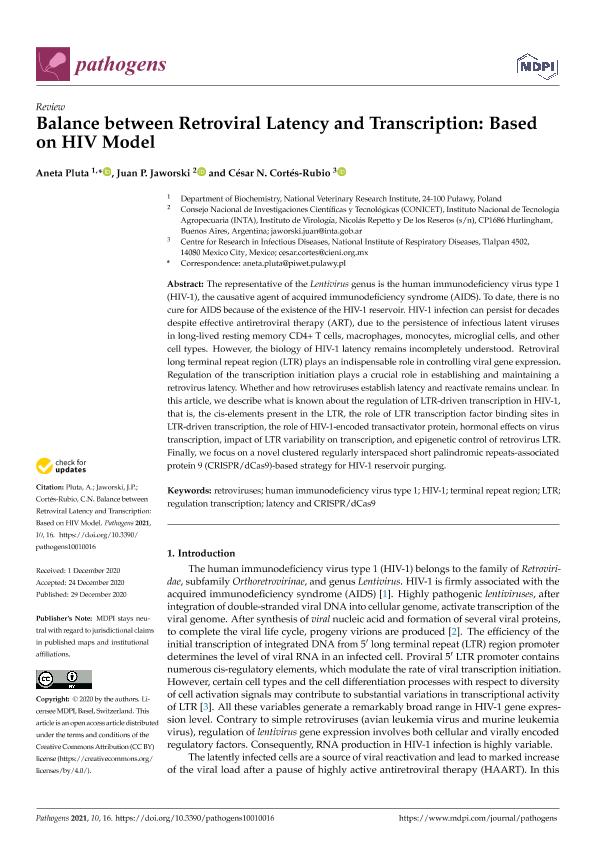Artículo
Balance between retroviral latency and transcription: Based on hiv model
Fecha de publicación:
12/2020
Editorial:
Multidisciplinary Digital Publishing Institute
Revista:
Pathogens
e-ISSN:
2076-0817
Idioma:
Inglés
Tipo de recurso:
Artículo publicado
Clasificación temática:
Resumen
The representative of the Lentivirus genus is the human immunodeficiency virus type 1 (HIV-1), the causative agent of acquired immunodeficiency syndrome (AIDS). To date, there is no cure for AIDS because of the existence of the HIV-1 reservoir. HIV-1 infection can persist for decades despite effective antiretroviral therapy (ART), due to the persistence of infectious latent viruses in long-lived resting memory CD4+ T cells, macrophages, monocytes, microglial cells, and other cell types. However, the biology of HIV-1 latency remains incompletely understood. Retroviral long terminal repeat region (LTR) plays an indispensable role in controlling viral gene expression. Regulation of the transcription initiation plays a crucial role in establishing and maintaining a retrovirus latency. Whether and how retroviruses establish latency and reactivate remains unclear. In this article, we describe what is known about the regulation of LTR-driven transcription in HIV-1, that is, the cis-elements present in the LTR, the role of LTR transcription factor binding sites in LTR-driven transcription, the role of HIV-1-encoded transactivator protein, hormonal effects on virus transcription, impact of LTR variability on transcription, and epigenetic control of retrovirus LTR. Finally, we focus on a novel clustered regularly interspaced short palindromic repeats-associated protein 9 (CRISPR/dCas9)-based strategy for HIV-1 reservoir purging.
Archivos asociados
Licencia
Identificadores
Colecciones
Articulos (IVIT)
Articulos de INSTITUTO DE VIROLOGIA E INNOVACIONES TECNOLOGICAS
Articulos de INSTITUTO DE VIROLOGIA E INNOVACIONES TECNOLOGICAS
Citación
Pluta, Aneta; Jaworski, Juan Pablo; Cortés Rubio, César N.; Balance between retroviral latency and transcription: Based on hiv model; Multidisciplinary Digital Publishing Institute; Pathogens; 10; 1; 12-2020; 1-26
Compartir
Altmétricas




